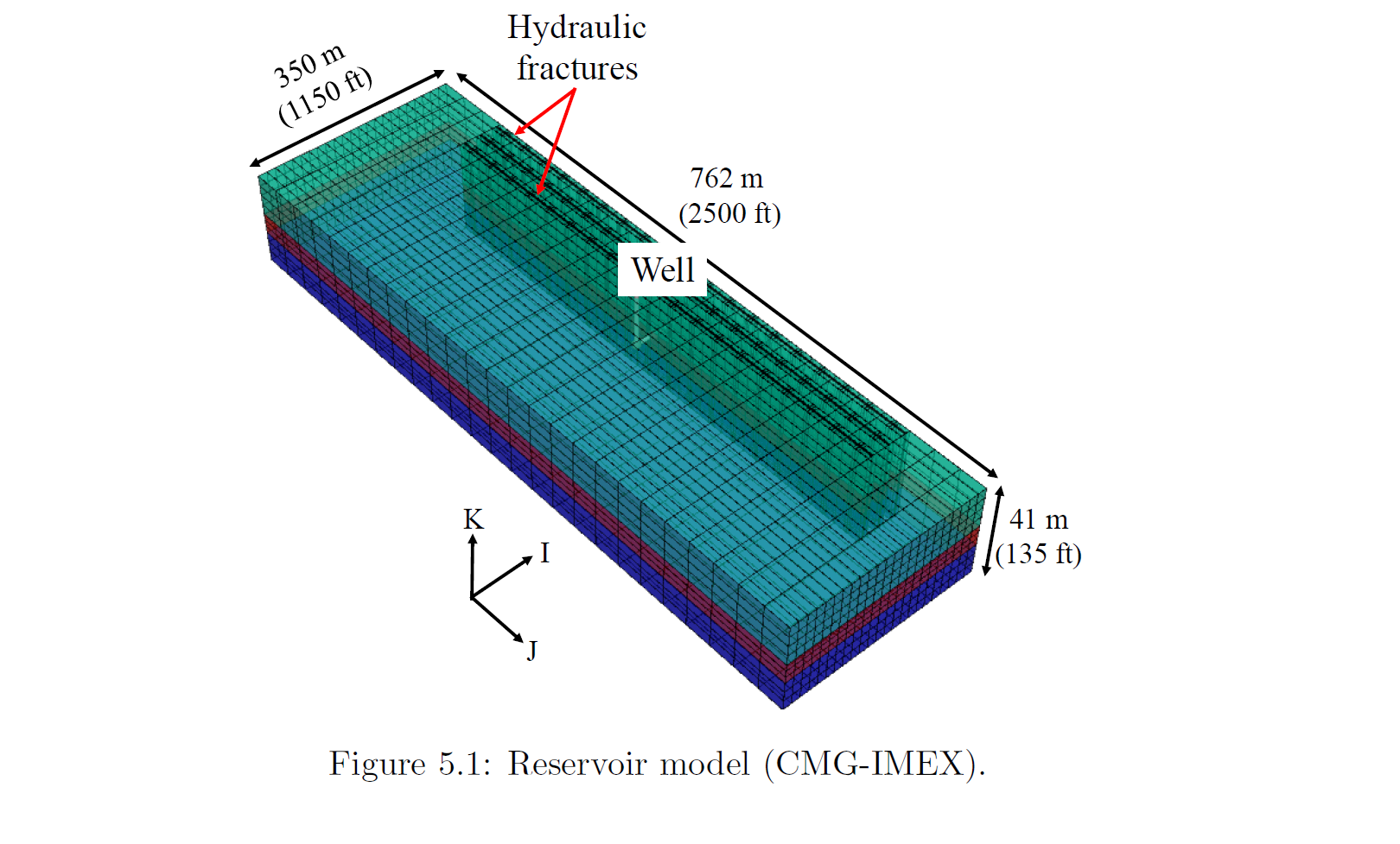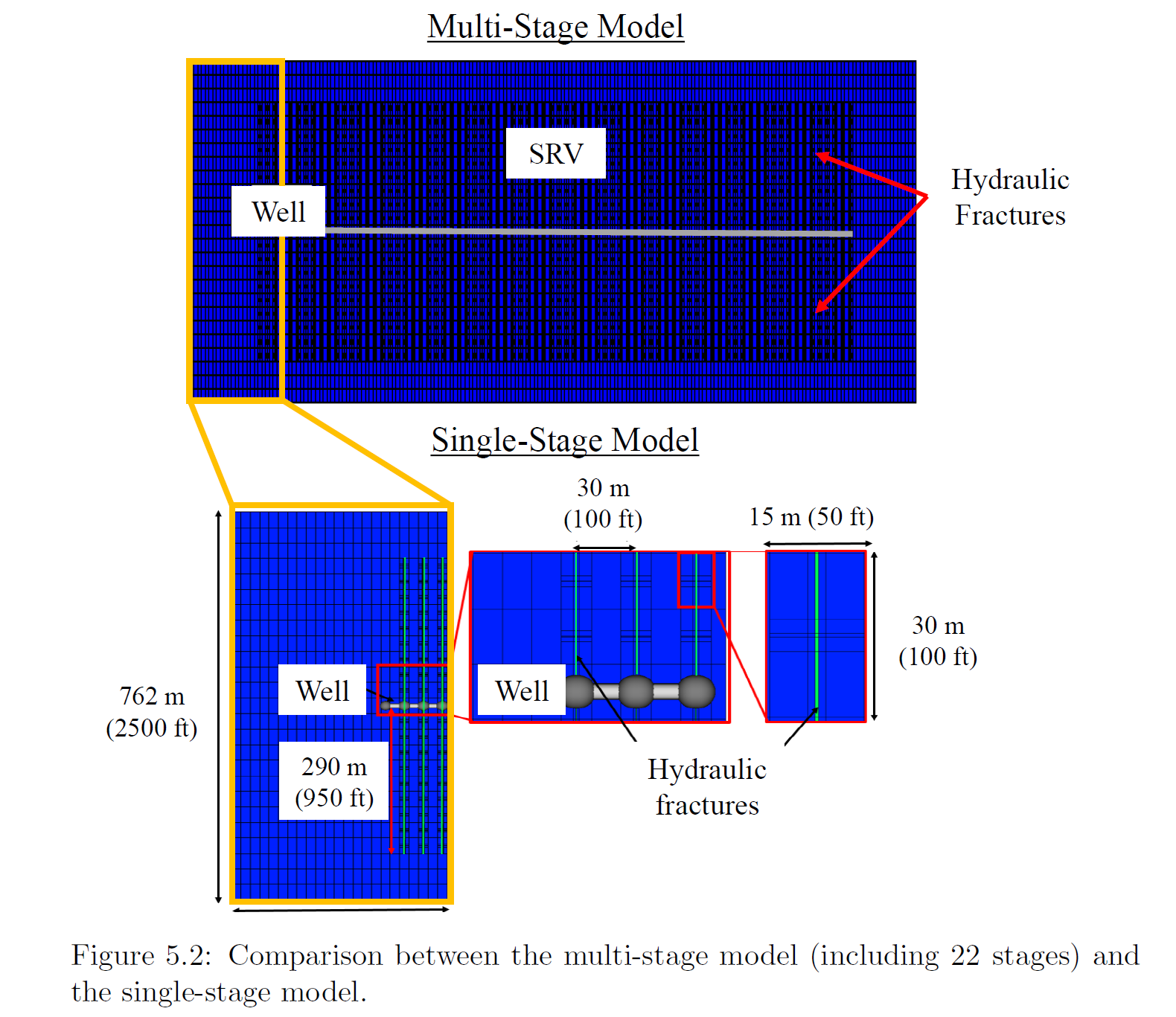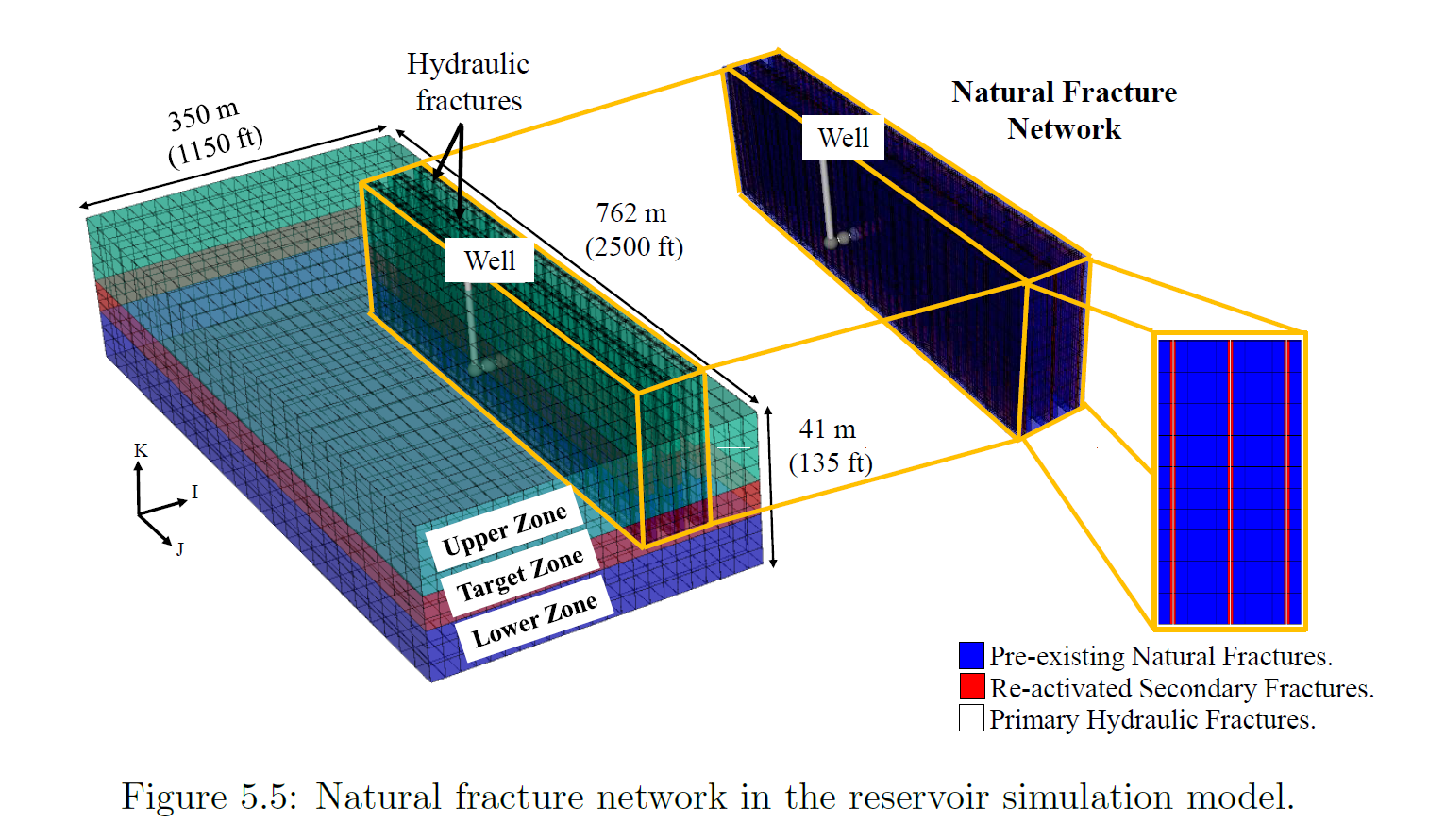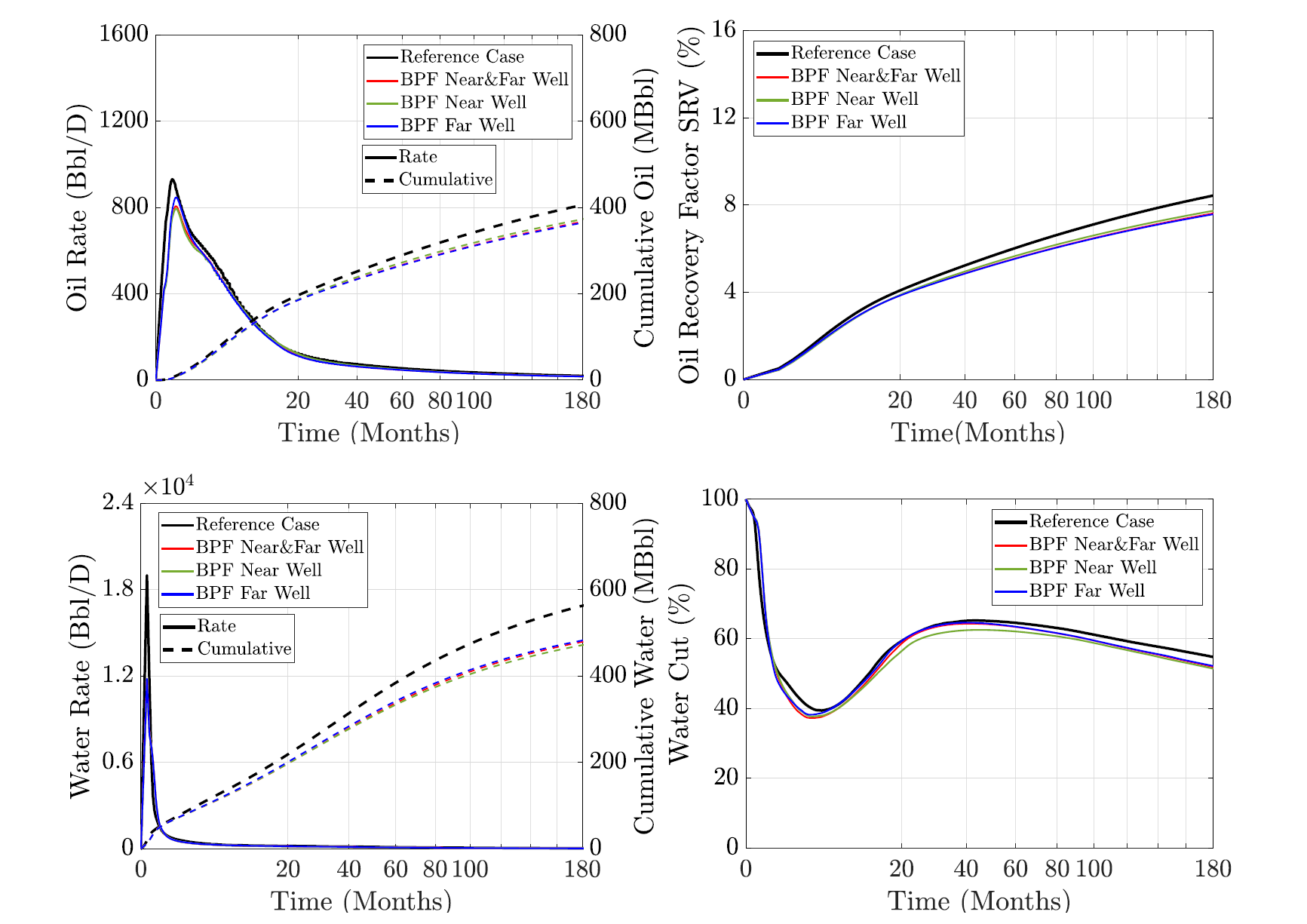Shale Reservoir Simulation in Basins with High Pore Pressure and Small Differential Stress
页岩油气生产是全球能源供应的重要来源。从页岩储层商业化开采油气需要水平井钻井、水力压裂和多级完井相的组合技术。该技术产生导流水力裂缝,并与地层中原有的天然裂缝和层理面相互作用。微地震研究和现场试验发现复杂水力压裂几何形状可能导致井筒流动效果不佳。
本研究使用商用模拟器(CMG IMEX)分析了三种水力裂缝几何形状(“场景”)对超压页岩油藏产量的影响。第一方案是理想的垂直水力压裂基础方案。第二方案是由垂直水力压裂和垂直次生裂缝组成的正交水力压裂网络。第三方案是垂直水力压裂和水平层理平面压裂。同时,采用更多的模拟模型研究不同裂缝性质对油气产量的影响,如天然裂缝方向和间距、每级压力裂缝数、垂向次生裂缝和水平裂缝数量以及裂缝闭合机制。
结果表明,过度简化的理想平面裂缝不能准确表征各向异性页岩区水力压裂裂缝几何形状,并导致油气产量预测不准确。同时还发现,未支撑的水平裂缝降低了油气产量,而垂向次生裂缝提高了初始产量。 水平裂缝是发生在具有高孔隙压力和逆断层过渡带区域的一种特殊情况,这类储层存在于某些非常规烃源岩中,如宾夕法尼亚州东北部和弗吉尼亚州西南部的马塞卢斯页岩,以及沙特阿拉伯贾夫拉盆地的图瓦克山地层。研究结果表明,与基础方案相比,水平裂缝可能会使累积油气产量减少20%,初始油气产量减少55%。本研究展示了独特的数值模拟技术,评估不同变量对井筒生产效果的影响,及不同水力裂缝几何形状对油气生产的影响。
沙特阿拉伯王国图瓦阿卜杜拉国王科技大学
Abstract
Hydrocarbon production from mudrock (“shale”) reservoirs is fundamental in the global energy supply. Extracting commercial amounts of hydrocarbons from shale plays requires a combination of horizontal well drilling, hydraulic fracturing, and multi-stage completions. This technology creates conductive hydrofractures that may interact with pre-existing natural fractures and bedding planes. Microseismic studies and field pilots have uncovered evidence of complex hydrofracture geometries that can lead to unsatisfactory wellbore flow performance.
This study examines the effects of three hydrofracture geometries (”scenarios”) on wellbore production in overpressured shale oil reservoirs using a commercial reservoir simulator (CMG IMEX). The first scenario is our reference case. It comprises ideal ized and vertical hydrofractures. The second scenario has an orthogonal hydrofracture network made up of vertical hydrofractures with perpendicular secondary fractures. The third scenario has vertical hydrofractures with horizontal bedding plane fractures. We generated additional simulation models that aim to capture the effect on hydrocarbon production of different fracture properties, such as natural fracture orientation and spacing, number of hydrofractures per stage, number of perpendicular secondary fractures and horizontal fractures, and fracture closure mechanism. The results show that ideal planar fractures are an oversimplification of the hydrofracture geometry in anisotropic shale plays.They fail to represent the complex geometry in reservoir simulation and lead to unexpected hydrocarbon production forecasting. They also show that the generation of unpropped horizontal fractures harms hydrocarbon productivity, while perpendicular secondary fractures enhance initial reservoir fluid production.
The generation of horizontal hydrofractures is a particular scenario that may occur in reservoirs with high pore pressure and transitional strike-slip to reverse faulting regime. These conditions have been reported in unconventional source rock plays, like the Marcellus shale in northeast Pennsylvania and southwest Virginia, and the Tuwaiq Mountain formation in the Jafurah Basin in Saudi Arabia. Our findings reveal that the presence of horizontal hydrofractures might reduce the cumulative hydrocarbon production by 20%, and the initial hydrocarbon production by 55% compared to the reference case. Our work shows unique reservoir simulations that enable us to assess the impact of different variables on wellbore production performance and understand the effects of varied hydrofracture geometries on hydrocarbon production.
King Abdullah University of Science and Technology Thuwal, Kingdom of Saudi Arabia
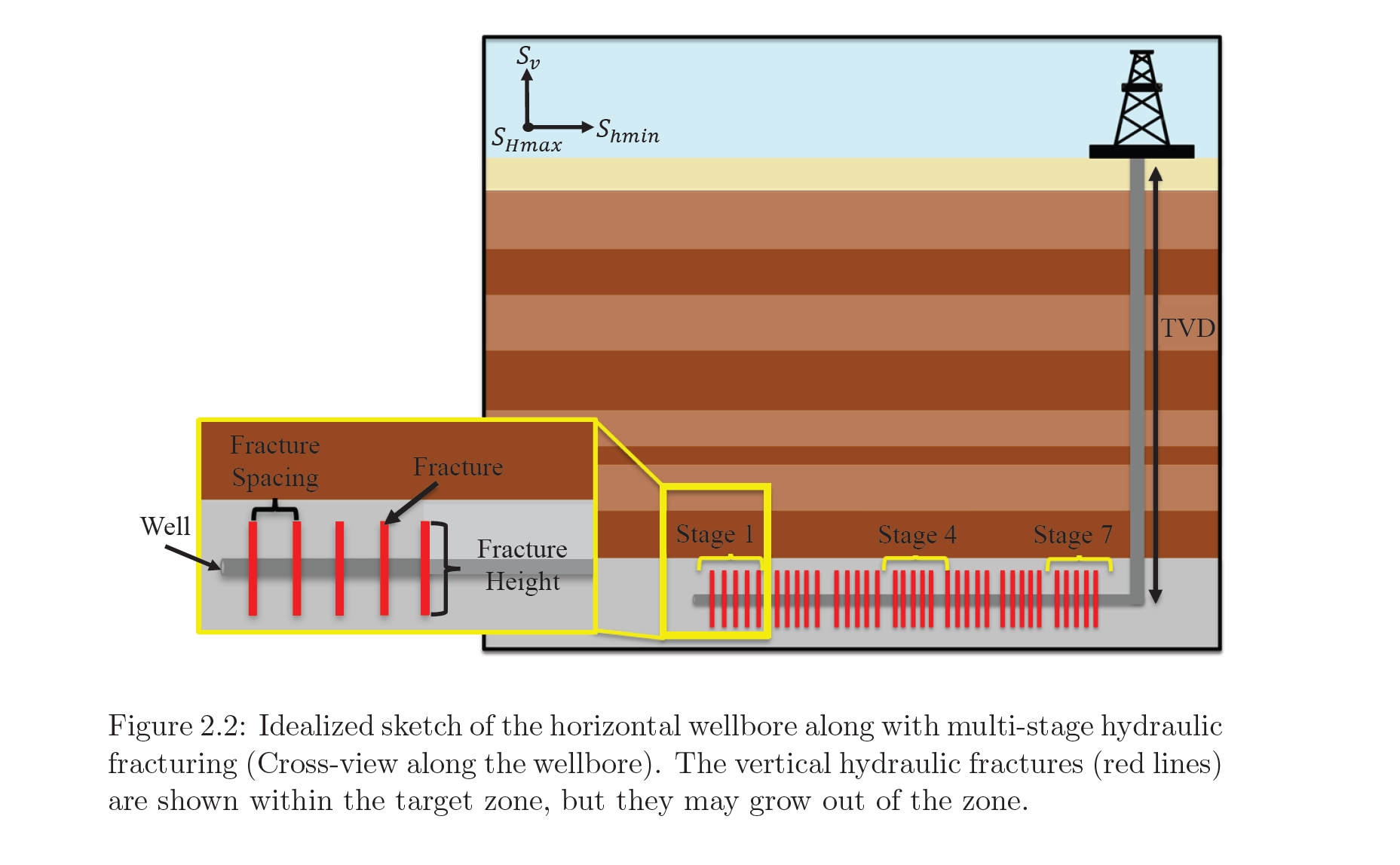
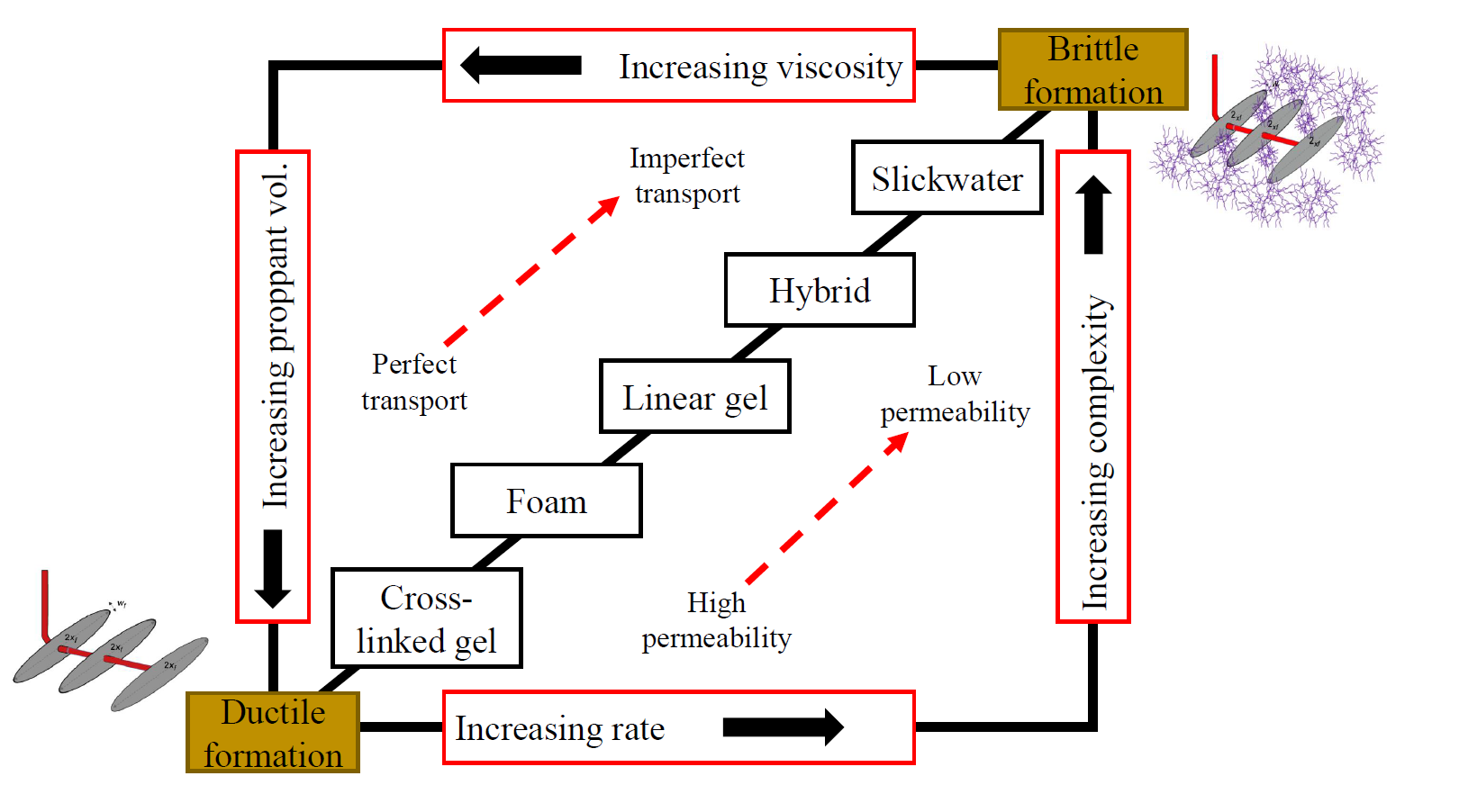
Figure 2.3: Fracturing fluid design.
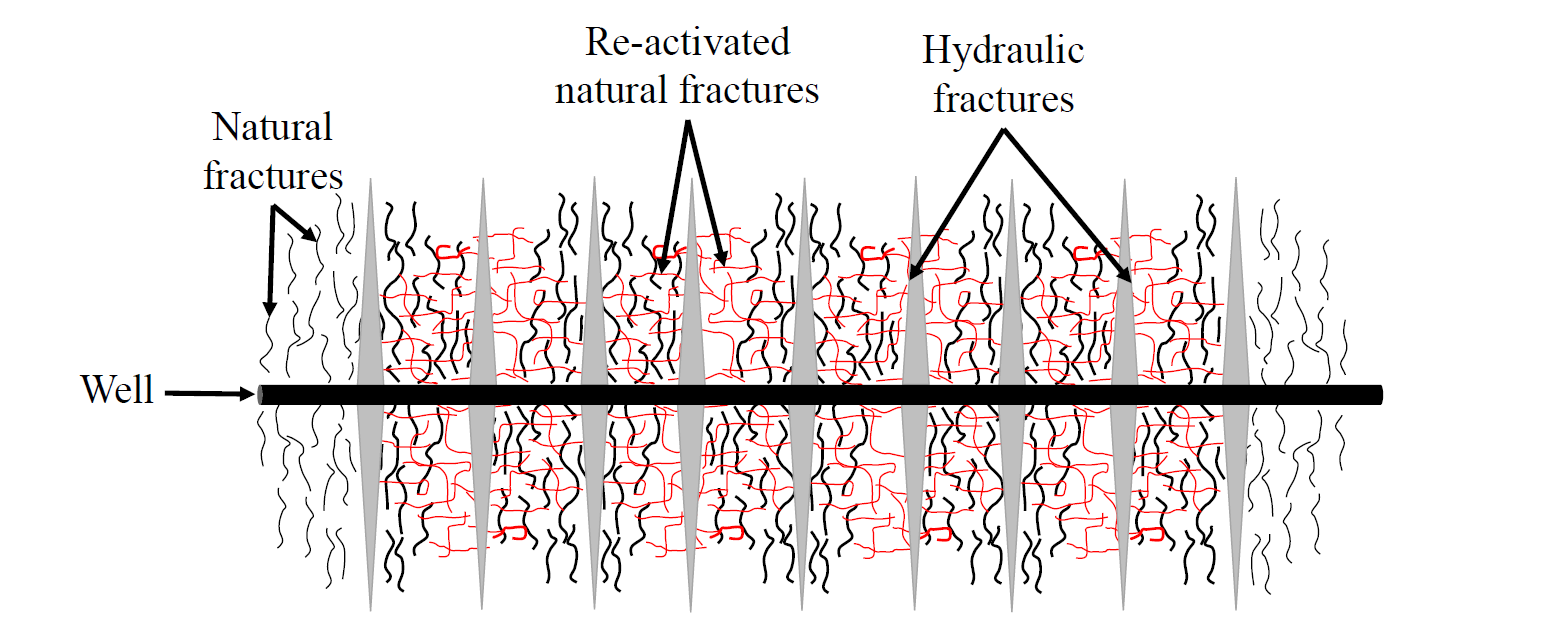
Figure 2.4: Schematic diagram of hydraulic fractures and natural fractures interaction
when using slick water fracturing uid (Map view).
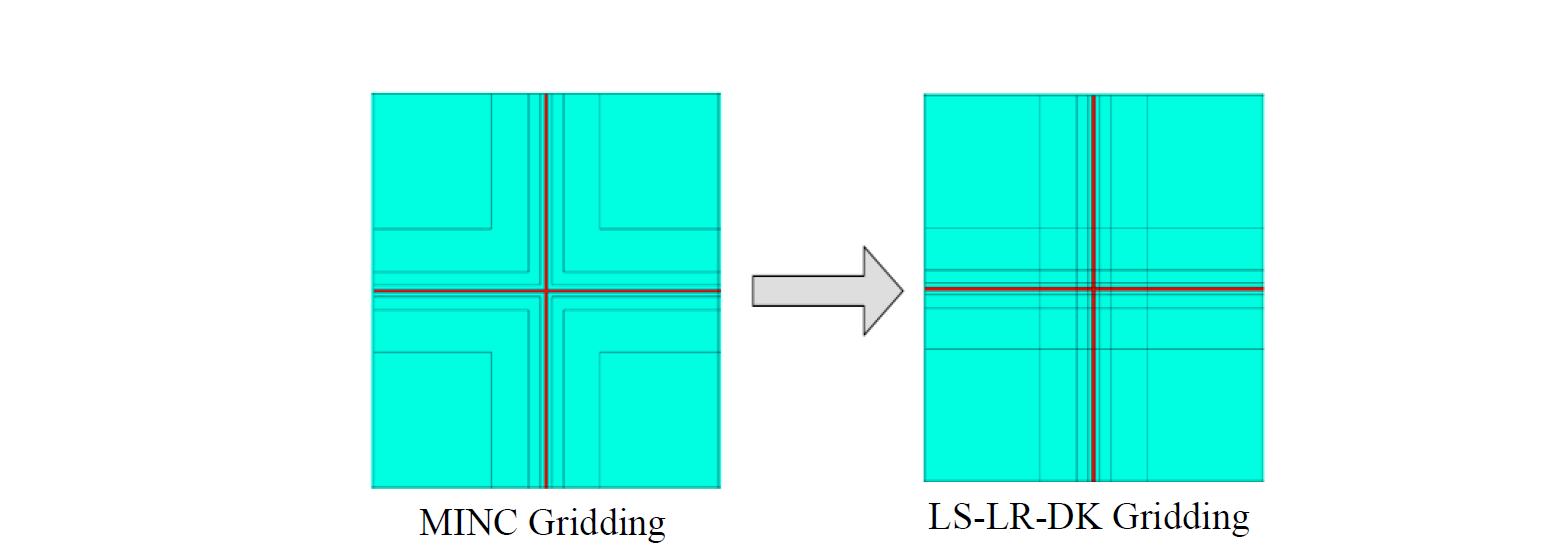
Figure 4.6: Comparison between the gridding used in the MINC model and the
LS-LR-DK model (map view).
